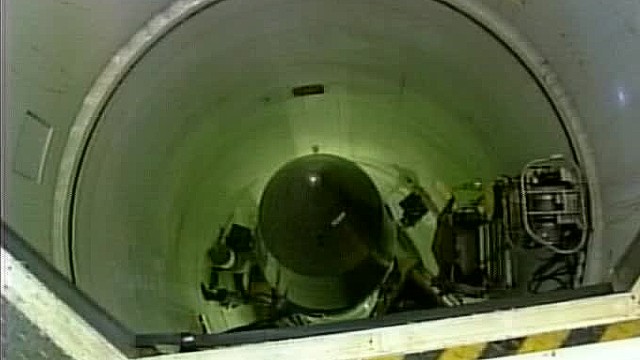
Nuke door open while officer slept
STORY HIGHLIGHTS
- Two disciplined for leaving silo blast doors open
- Air Force says security was not compromised
- Disclosure follows firing of two-star general
In another public embarrassment for the Air Force’s nuclear missile program, two crew members were disciplined earlier this year for leaving silo blast doors open while they were on duty in an underground facility housing nuclear missiles.
The incidents, first reported by the Associated Press, were confirmed Wednesday by the Air Force.
Under Air Force regulations, a two-man missile launch crew is required to keep the underground blast door shut when one crew member is asleep during the 24-hour shift.
In April a crew member was found “derelict in his duties in that he left the blast door open in order to receive a food delivery from the onsite chef” while the other crew member was on an authorized sleep break, Air Force spokesman Lt. Col. John Sheets said in a statement.
The crew member who was found “derelict” received a punishment of forfeiting $2,246 in pay for each of two months. The other crew member admitted to similar misconduct “on a few occasions” and received a letter of admonishment. The April incident occurred at Minot Air Force Base in North Dakota
In May, at Malmstrom Air Force Base in Montana, a maintenance team was allowed into an underground launch control center while one crew member was sleeping, in violation of rules. In this case, the commander of the crew, when questioned about the incident, told the deputy to lie about being asleep, which she initially did, according to officials.
The incident was investigated, and both crew members were disciplined. The commander is forfeiting $3,045 in pay for each of two months and facing a discharge board.
The silo blast doors are at the bottom of a shaft that leads to the launch control center. The heavy-duty blast doors are meant to protect the launch control center in event of a nuclear blast. That center controls up to 10 missile silos.
Air Force officials insist security was not compromised in these incidents because there are multiple layers of security above ground that would keep unauthorized personnel from gaining access to a launch control center. The centers are generally 40 feet to 100 feet underground, and the two-man crew controls as many as 10 missile silos.
There also are multiple layers of security surrounding nuclear launch codes.
But the disclosures come on the heels of the firing of the two-star general in charge of the Air Force’s three nuclear wings. Earlier this month, Maj. Gen. Michael Carey was “relieved” of command “due to a loss of trust and confidence in his leadership and judgment,” the Air Force said at the time. Carey’s removal had to do with reports of alleged misbehavior on a business trip.
In August, one of the Air Force’s nuclear wings failed a safety and security inspection and a separate wing did poorly in an inspection earlier in the year, which resulted in 17 military personnel being decertified from their jobs. They have since undergone retraining and are back at work.


Leave a reply